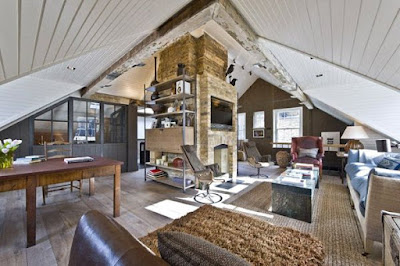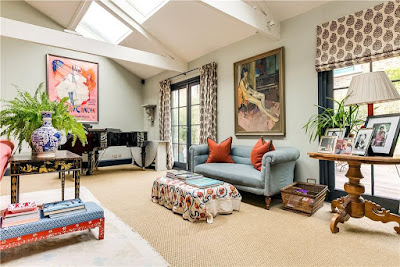My time in London 1998 was a tumultuous and not entirely happy one. Even a less overpowering city than London would have intimidated me. I'm a country bumpkin at heart, after all. So I commuted every day from semi-rural Oxford to Cavendish Square, W1. Apart from the financial necessities, nights and weekends in that city would have driven me over the edge, or so I felt at that time.
However, the few moments I felt at peace was, when I discovered "the mews". Around Sloane Square, habitat of the "mildly retarded Sloane Ranger" (Jilly Cooper - Lady Diana Spencer of which used to be one) that was. The peace, tranquility and orlde-worlde charme right in the middle of a overheated cauldron of precipitant hustle and bustle always at the edge of exploding, so I felt, was like Alice transgressing through the looking-glass.
 |
| Holland Park Mews |
 |
| Kynance Mews |
 |
| Stanhope Mews |
…the other one "cheap and tasteless". It will never cease to amaze me how people who can afford a million (at the very least) for such a house, in most cases several more, can have such awful taste. I have chosen the few I found at least bearable to give a whiff of the interiors of such houses.
They are much more spacious than one would think, quite a lot even have a small garden at the back.
Those lanes had not always been what they are today. In fact London's iconic mews have humble origins as service roads behind the grand town houses of the Georgian and Victorian elites.
Mews were built when London expanded to the west in the 18th century, when grand terraces of town houses where established on the fields in areas such as Mayfair, Kensington and Marylebone. Most mews houses had stables and a coach house on the ground floor, the first floor a hayloft and a couple of rooms where the coach drivers, the grooms and sometimes other servants as well could sleep. Mews were utilitarian places, with hard-wearing cobbles and a drain down the middle to take away the waste from the horses.
There was usually a tunnel under the garden connecting with the basement of the main house, so servants could slip out to the stable without disturbing the residents. A curious feature of almost any mews house is that it had no windows at the back, so servants could not spy on their employers enjoying a stroll in their garden.
This solution was different from most of Continental Europe, where the stables in wealthy urban residences were usually off a front or central courtyard. The advantage of the British system was that it hid the sounds and smells of the stables away from the family.
Today, mews houses have been in their majority more or less tastefully restored to provide everything for a 21st century lifestyle. An authentic mews property will still retain the approximate appearance, form and footprint of the original mews but it may have been re-developed to a degree and no longer retains all original features A mews is a safe, virtually traffic-free environment, often found along quiet cobbled lanes. Due to their past as coachhouses, many of them have retained garages, a very useful feature in a huge metropole.
The name "mews" comes from the Royal Mews, gigantic stables on what is now Trafalgar Square. the word, again, is derived from the original use of the stable buildings which housed the king's falcons. Falcons work was called to "moult" or "mew" (from the French verb "muer"), so the place where they performed was referred to as a mews.
Today's Royal Mews are open to the public and surely, at least for the non-horsey but rather glossy-magazine-inclined visitors the iconic coaches we all know from royal weddings will be the prime attraction.
Mews lost their equestrian function in the early 20th century when motor cars were introduced. At the same time, after World War I and especially after World War II, the number of people who could afford to live in the type of houses which had a mews attached fell sharply. One place where a mews can still be found put to equestrian use is Bathurst Mews in Westminster, near Hyde Park, where several private horses are kept in two riding schools.
The vast acres of Hyde Park are their stomping ground…
…as well as of the Household Cavalry.
Some mews were demolished or put to commercial use for small businesses and workshops, but the majority were converted into homes. Mews became a byword as scruffy back-streets, often used as locations for gritty gangland dramas on black-and-white TV. Then, in the swinging 1960s, racing drivers such as John Surtees and James Hunt discovered they could buy a mews house for not much money and live above their cars.
One of them was rally driver Antoine Lurot, founder of Lurot Brand, now one of the leading agents in the market for mews houses. Antoine realised that mews houses might become very fashionable as they were originally built to serve the aristocracy and are thus located in the very best areas.
In short: the concept worked.
 |
| No doubt, a lot of time, sweat and money will have to be spent on this one. |
This well-made Lurot Brand video allows a glimpse at Bathurst Mews in Bayswater W1, where the two last riding schools in inner London are located, just a stone throw away from Hyde Park and Rotten Row. To call the latter a bridle path would be akin to calling St. Peter's Basilica a village church.
 |
| The Morning Ride Rotten Row Hyde Park by Heywood Hardy (1894). |
I got the interior pictures from the website of Lurot Brand and from the London Perfect Blog.
By mere chance, I came across this property at Turnchapel Mews, spanning the first floor of four houses and the ground floor of one. With 4,000 sq ft, roughly 371 sq m and its vast roof terrace, it's probably unique among its peers.
However, what really intrigued me was its interior. My apologies for the above sweeping condemnation of interior decorators and owners of London mews houses. As I said, I'm an interior decoration buff and in the course of my research, or mere Internet surfing, I've never come across a more charming and inspired marriage of traditional and modern. Were I able to buy the property for the measly just under 4 millions asking price (a steal!), I wouldn't change A THING.
The pictures are in no specific order because it's such a faff to sort pictures with the Blogger/Blogspot interface.
Enjoy!



















































